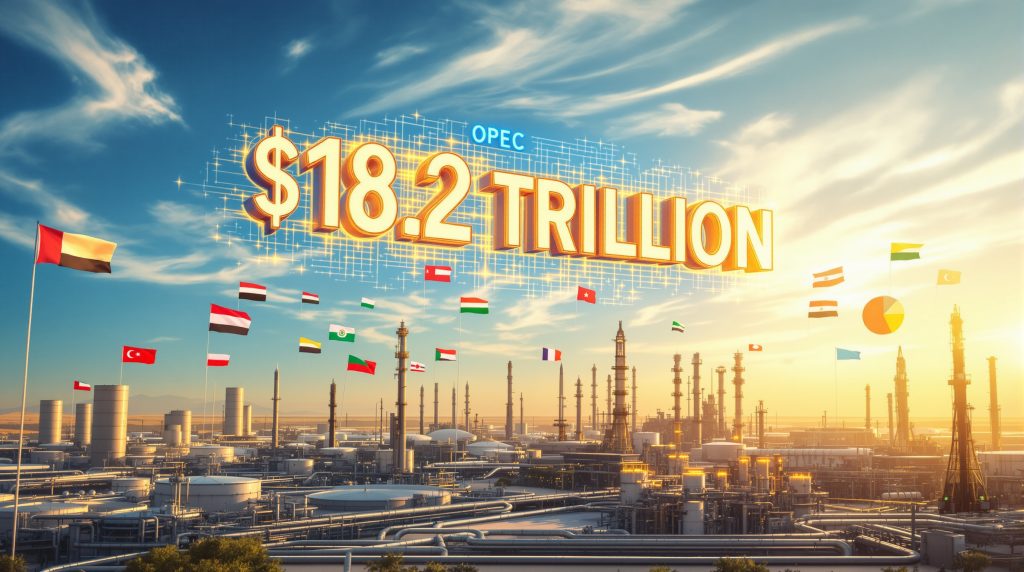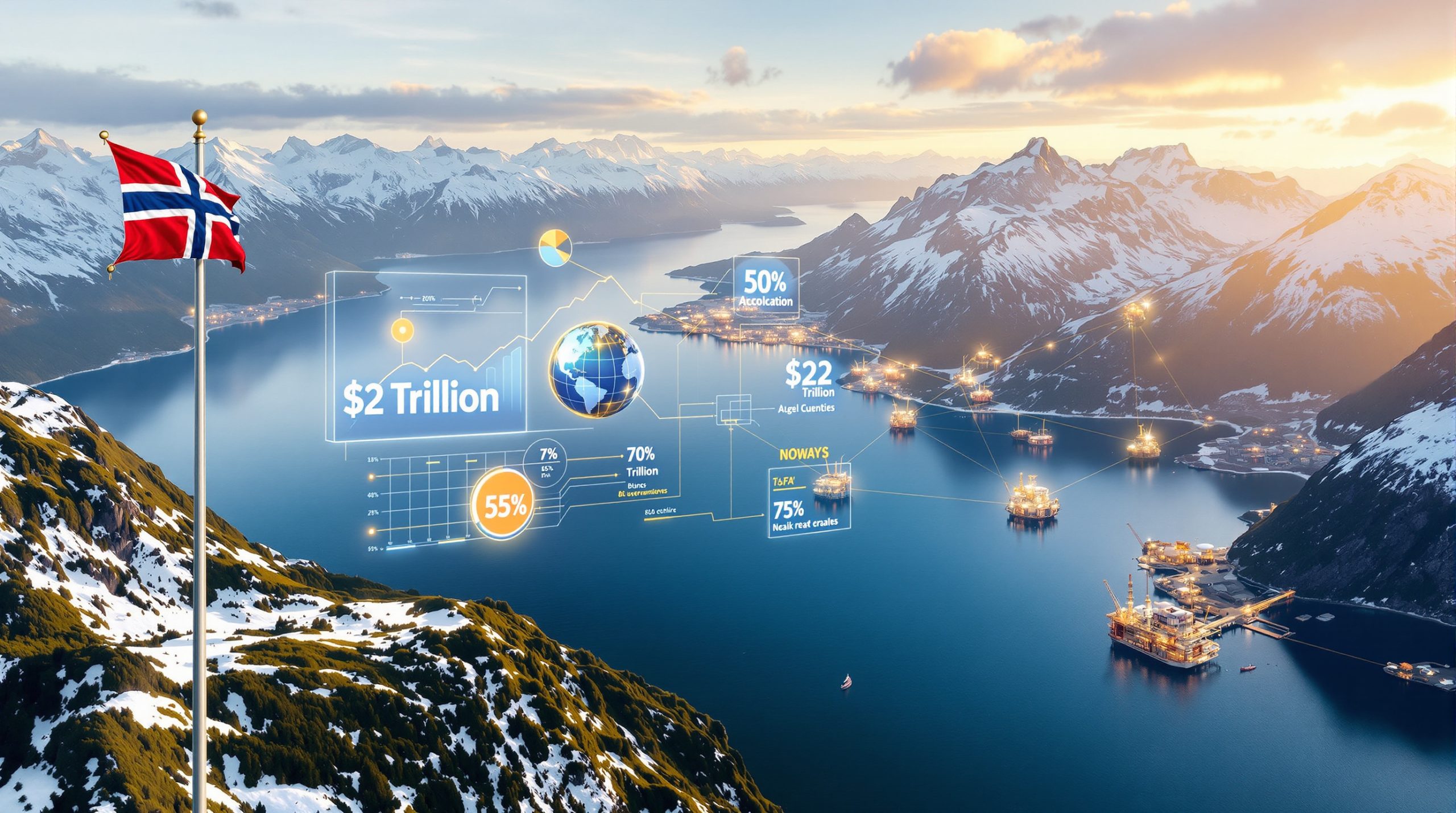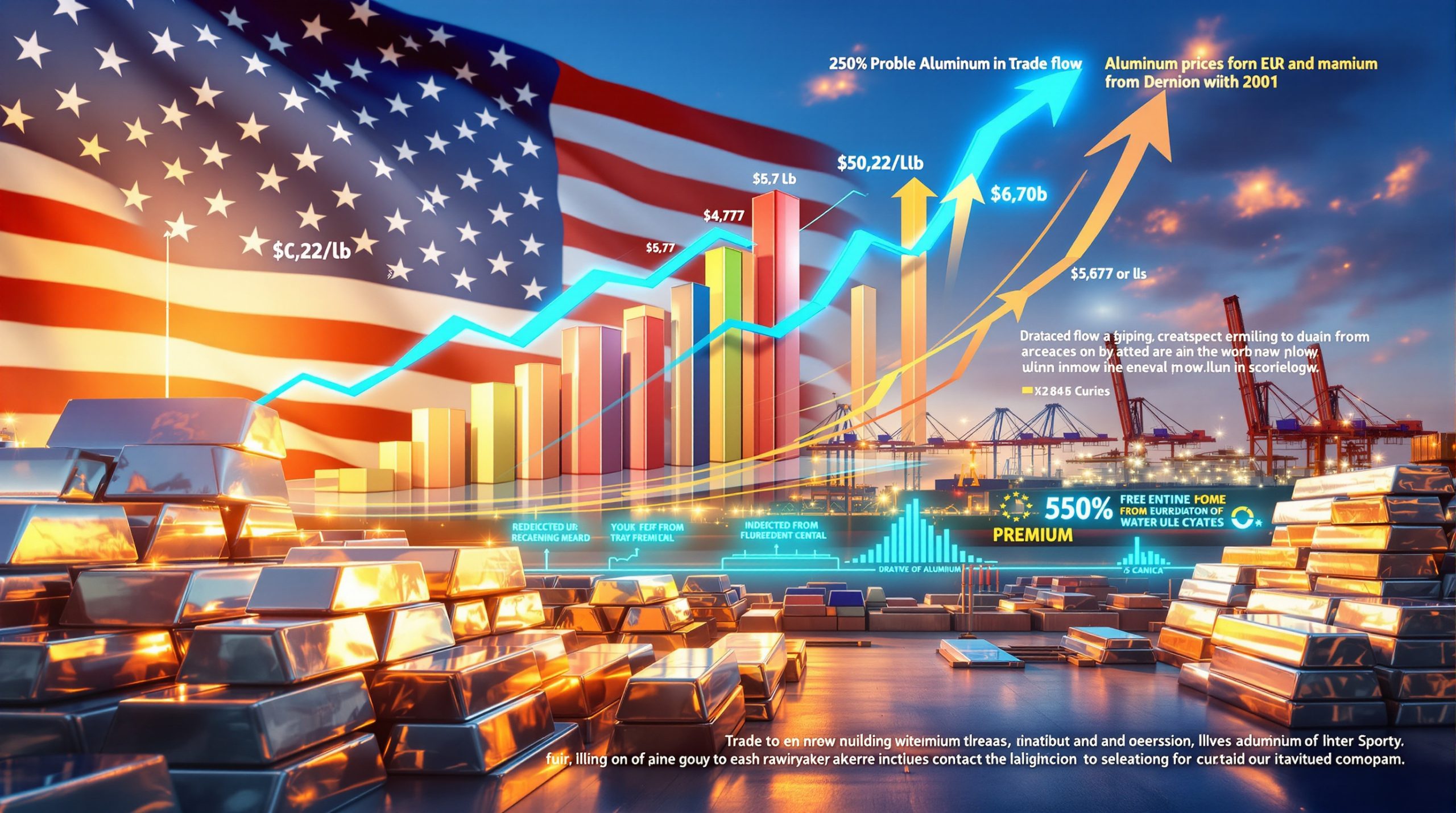OPEC's Unprecedented $18.2 Trillion Investment Call Reshapes Global Energy Strategy
The global energy landscape faces a pivotal moment as OPEC presents its most ambitious OPEC trillion investment projection to date. The organisation's comprehensive assessment reveals an extraordinary capital requirement that challenges conventional wisdom about energy transition timelines and investment priorities through mid-century.
What Does OPEC's $18.2 Trillion Investment Projection Actually Cover?
OPEC's comprehensive forecast encompasses a broad spectrum of energy infrastructure development spanning the next 25 years. This massive capital requirement addresses upstream exploration activities, production facility enhancement, and technological advancement across global oil and gas operations.
The investment scope extends far beyond traditional drilling operations to include sophisticated emissions reduction technologies, infrastructure modernisation, and capacity maintenance systems designed to offset natural production decline rates across aging oil fields worldwide.
Breaking Down the Investment Categories
• Upstream exploration and development projects requiring advanced geological assessment
• Production capacity maintenance systems combating natural field decline rates
• Advanced extraction technologies enabling access to challenging reserve locations
• Environmental compliance systems meeting increasingly stringent emissions standards
• Infrastructure modernisation across interconnected global supply chains
According to OPEC Secretary General Haitham Al Ghais, these investments remain vital for consumers and producers everywhere, as well as for the effective functioning of the global economy at large. The organisation emphasises that this capital deployment represents cumulative requirements through 2050, averaging approximately $728 billion annually across the entire global oil industry.
How Does This Compare to Previous OPEC Investment Estimates?
The current projection marks a substantial increase from earlier assessments, reflecting evolving market dynamics and refined demand forecasting methodologies. Previous estimates focused primarily on upstream activities, with OPEC projecting $14.9 trillion for exploration and production activities alone through 2050.
Evolution of OPEC Investment Projections
| Time Period | Investment Estimate | Coverage Scope |
|---|---|---|
| Through 2050 | $14.9 trillion | Upstream activities only |
| Through 2050 | $18.2 trillion | Comprehensive industry needs |
The expansion from $14.9 trillion to $18.2 trillion indicates OPEC has broadened its assessment beyond traditional upstream operations to encompass comprehensive industry infrastructure requirements. This evolution demonstrates increasingly sophisticated analysis incorporating downstream operations, transportation networks, and environmental compliance systems.
What Drives OPEC's Demand Growth Projections?
OPEC's investment rationale stems from projected global oil consumption increasing from approximately 104 million barrels per day in 2025 to 123 million barrels per day by 2050. This 18.3% growth expectation positions OPEC as significantly more optimistic about sustained fossil fuel demand compared to other international energy agencies.
Secretary General Al Ghais emphasised at the Russian Energy Week conference in Moscow that growing economies, urbanisation, and rising population numbers lead to one clear signal that the world will need much more energy than it is consuming today. Additionally, OPEC projects primary energy demand will increase by 23% by 2050, suggesting recognition of expanding energy needs beyond petroleum alone.
Furthermore, understanding how tariffs impact investments becomes crucial when evaluating global energy market dynamics and international capital flows.
Key Demand Drivers According to OPEC
• Rising global population requiring expanded energy access infrastructure
• Continued urbanisation trends in developing economies driving consumption
• Industrial expansion in emerging markets increasing energy intensity
• Transportation sector growth in regions with limited electrification progress
The disparity between OPEC's 23% primary energy demand growth and 18% oil demand increase suggests the organisation acknowledges some diversification toward alternative energy sources whilst maintaining petroleum's central role in global energy systems.
Why Does OPEC Believe Oil Will Maintain 30% of Global Energy Mix?
Despite accelerating renewable energy deployment, OPEC projects oil will retain approximately 30% of total global energy consumption through 2050. This assessment challenges mainstream energy transition timelines and reflects OPEC's evaluation that renewable alternatives cannot completely replace hydrocarbon demand within current technological and economic frameworks.
Al Ghais stated that oil will still represent 30% of total global energy consumption in 2050, emphasising the persistent role of petroleum products across diverse economic sectors. This perspective acknowledges renewable growth whilst maintaining that practical implementation limitations prevent complete fossil fuel displacement.
However, it's important to consider how policies regarding critical minerals energy transition security affect the viability of renewable energy alternatives and their ability to challenge fossil fuel dominance.
OPEC's Energy Mix Assumptions
• Persistent transportation fuel requirements in aviation and maritime sectors
• Industrial process dependencies on petroleum-based chemicals and materials
• Geographic constraints limiting renewable energy deployment effectiveness
• Economic barriers preventing complete electrification in developing regions
How Does This Contrast with IEA's Changing Position?
OPEC has emphasised the International Energy Agency's significant policy reversal regarding oil and gas investment requirements. The IEA's 2021 position advocated no new investment in oil and gas under a net-zero by 2050 scenario, contrasting sharply with its recent acknowledgement that new resource development remains necessary.
Key Differences in Agency Perspectives
| Organisation | Investment Stance | Policy Evolution |
|---|---|---|
| OPEC | $18.2 trillion required | Consistently pro-investment |
| IEA (2021) | No new investment needed | Net-zero scenario advocacy |
| IEA (2024/2025) | New resources necessary | Acknowledged decline rates |
OPEC characterised this shift as a cautionary tale, noting the IEA's major shift in its narrative. The agency now acknowledges that the world needs to develop new oil and gas resources just to keep output flat amid faster declining rates at existing fields.
OPEC stated that the IEA has not referenced how its own advocacy of its Net Zero Emissions Scenario or its own prognosis of peak oil demand have discouraged investments and contributed to uncertainty about long-term oil demand.
The organisation emphasised its consistent advocacy for timely investments in the oil industry to account for decline rates and meet growing demand, contrasting this with the IEA's policy reversals. OPEC stressed that all stakeholders must maintain consistency and avoid returning to rhetoric suggesting no investment in new oil projects.
What Are the Geopolitical Implications of This Investment Scale?
The massive capital requirement creates significant geopolitical dynamics regarding energy security and supply chain control. Nations and corporations capable of mobilising such investment levels will likely maintain disproportionate influence over global energy markets through mid-century.
Al Ghais emphasised that investments remain vital for consumers and producers everywhere, recognising global energy interdependence. This OPEC trillion investment scale requires international cooperation whilst potentially concentrating market power among financially capable actors.
In addition, regional policy changes such as the alaska drilling policy and venezuelan oil policy demonstrate how domestic energy strategies can influence global investment patterns.
Strategic Investment Considerations
• National energy security priorities driving domestic investment policies
• Corporate market positioning opportunities creating competitive advantages
• Technology development initiatives influencing long-term market dynamics
• Regional supply chain dependencies affecting geopolitical relationships
How Might Energy Transition Policies Affect This Investment Timeline?
Government policies promoting renewable energy adoption could potentially alter OPEC's investment requirements and implementation timeline. However, OPEC maintains that realistic transition schedules necessitate continued hydrocarbon investment to prevent energy shortages during transition periods.
OPEC's consistent position emphasises that timely investments in the oil industry remain necessary to account for decline rates and meet growing demand. The organisation argues that abrupt policy shifts toward renewable-only investment create supply security risks.
Policy Risk Factors
• Carbon pricing mechanisms affecting investment returns and project viability
• Renewable energy subsidies creating competitive disadvantages for conventional fuels
• Electric vehicle adoption mandates reducing transportation fuel demand projections
• International climate agreement implementations constraining development activities
What Does This Mean for Global Energy Prices?
Insufficient investment in oil and gas infrastructure could create supply constraints leading to price volatility and potential energy security challenges. OPEC's investment advocacy aims to prevent such scenarios by maintaining adequate production capacity ahead of projected demand growth.
The organisation emphasises that investments remain essential for the effective functioning of the global economy at large, suggesting price stability depends on maintaining sufficient supply capacity. OPEC positions itself as advocating for consumer interests through supply security maintenance.
Consequently, understanding the broader global market impact of policy decisions becomes essential when evaluating energy investment strategies and their economic implications.
Price Stability Considerations
• Supply-demand balance maintenance requiring proactive capacity development
• Strategic reserve capacity preventing market disruption scenarios
• Market volatility mitigation through consistent investment approaches
• Consumer price protection via adequate supply buffer maintenance
Understanding Natural Decline Rates and Investment Necessity
A critical factor driving OPEC's investment requirements involves natural decline rates affecting existing oil and gas fields. These decline rates represent the natural reduction in production from aging fields over time, requiring continuous investment just to maintain current output levels.
The IEA's acknowledgement that faster declining rates at existing fields necessitate new resource development validates OPEC's long-standing position. This technical reality means that even maintaining current production levels requires substantial capital investment, separate from meeting growing demand.
Decline Rate Management Strategies
• Enhanced oil recovery techniques extending field productive lifespans
• Advanced drilling technologies accessing previously uneconomical reserves
• Reservoir management optimisation systems maximising recovery efficiency
• Infrastructure maintenance programmes preventing premature field abandonment
Investment Timeline and Annual Requirements
The $18.2 trillion investment requirement spans 25 years from 2025 through 2050, representing an average annual commitment of approximately $728 billion across the global oil and gas industry. This figure encompasses all participating companies, national oil companies, and independent operators worldwide.
OPEC's comprehensive assessment suggests this investment level reflects growing demand expectations combined with infrastructure maintenance requirements. The organisation emphasises that delayed investment creates compounding challenges as both decline rates and demand growth accelerate.
Annual Investment Distribution
• $728 billion average annual requirement across global oil industry
• $14.9 trillion baseline for upstream activities requiring supplementation
• $3.3 trillion additional for comprehensive industry infrastructure needs
• 25-year timeline allowing gradual capital deployment and technology integration
What Industry Experts Are Saying About OPEC's Projections
Industry analysts have responded to OPEC's OPEC trillion investment requirements with varying degrees of scepticism and support. Some experts argue the projections reflect realistic infrastructure needs given global energy demand growth, whilst others question the assumptions underlying such massive capital requirements.
The comprehensive analysis from industry experts highlights concerns about whether such investment levels are achievable given current market conditions and competing renewable energy initiatives.
Frequently Asked Questions About OPEC's Investment Projection
Is the $18.2 trillion figure realistic given current market conditions?
The investment requirement reflects OPEC's long-term demand projections based on demographic trends including growing economies, urbanisation, and rising populations. Al Ghais emphasised these factors create clear signals that the world will need much more energy than currently consumed.
This cumulative figure over 25 years represents comprehensive industry needs rather than immediate capital requirements. The average annual investment of $728 billion distributes across thousands of companies and projects globally, making individual commitments more manageable.
How does this compare to renewable energy investment requirements?
Whilst specific renewable energy investment comparisons require additional research beyond the available data, OPEC's projection encompasses maintaining existing energy supply whilst meeting projected demand growth. The organisation acknowledges renewable energy expansion whilst arguing that complete replacement remains impractical within current timelines.
What happens if this investment doesn't materialise?
OPEC has consistently emphasised that investments remain necessary to account for decline rates and meet growing demand. Without adequate investment, natural production decline at existing fields would reduce global supply capacity even as demand continues growing.
The organisation argues this scenario could create supply shortages, price volatility, and energy security challenges, particularly affecting regions heavily dependent on oil and gas imports. OPEC positions its investment advocacy as protecting both producer and consumer interests through supply security maintenance.
Disclaimer: The projections and investment requirements outlined represent OPEC's assessment based on current market conditions and demand forecasting. Actual investment needs may vary based on technological developments, policy changes, and economic conditions. Energy market participants should conduct independent analysis before making investment decisions.
This analysis is based on statements from OPEC Secretary General Haitham Al Ghais at the Russian Energy Week conference and OPEC's World Oil Outlook 2025. Investment figures represent industry-wide requirements rather than recommendations for individual participants.
Could Energy Sector Developments Signal Your Next Investment Opportunity?
As global energy markets evolve with massive investment requirements and shifting policies, staying informed about related mineral discoveries becomes crucial for capitalising on emerging opportunities. Discovery Alert's proprietary Discovery IQ model provides real-time alerts on significant ASX mineral discoveries, helping investors identify actionable opportunities ahead of the broader market and secure a competitive advantage in today's dynamic energy landscape.




